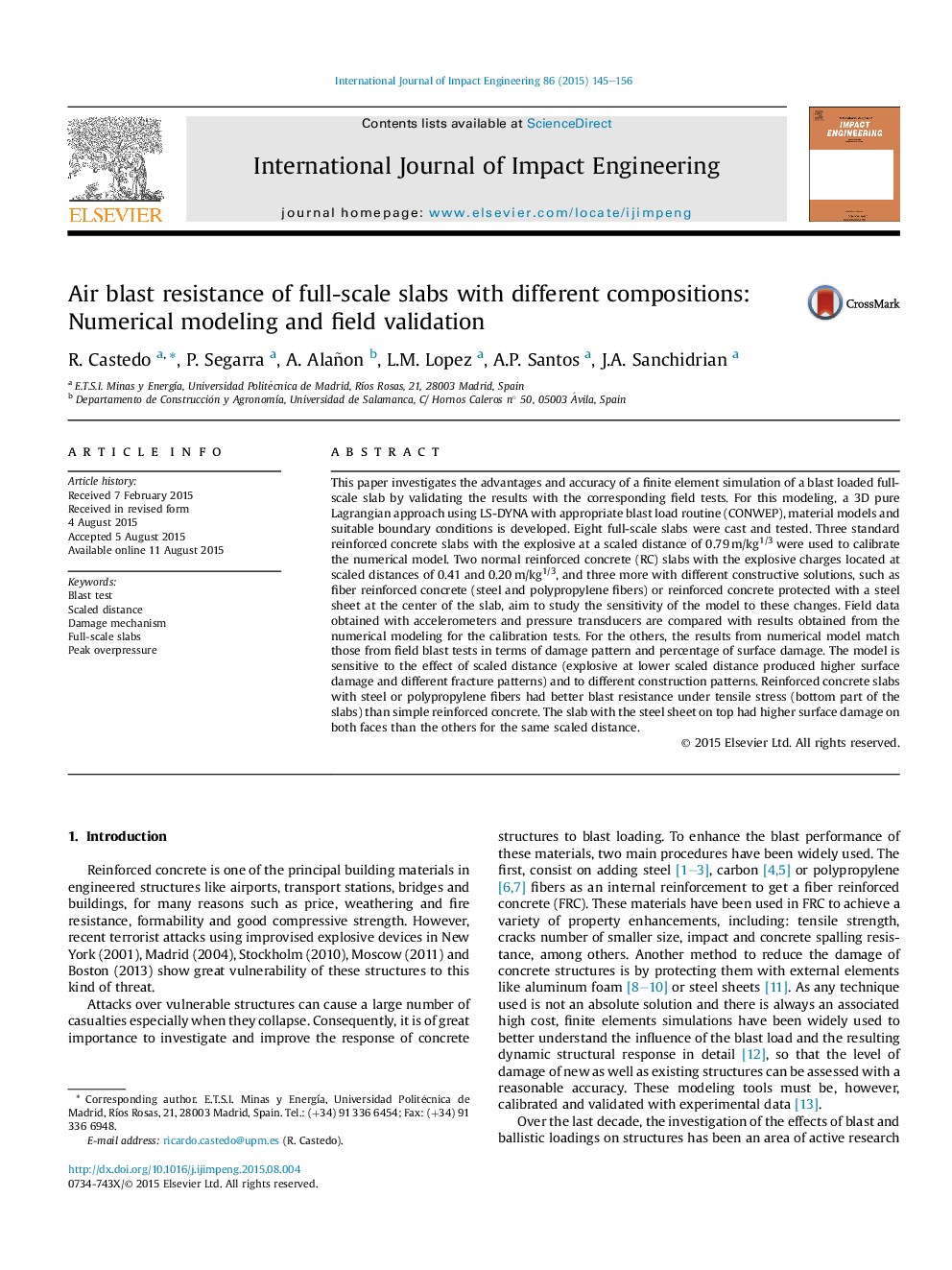| کد مقاله | کد نشریه | سال انتشار | مقاله انگلیسی | نسخه تمام متن |
|---|---|---|---|---|
| 776393 | 1464065 | 2015 | 12 صفحه PDF | دانلود رایگان |
• Full-scale experimental blast testing of RC panels with different scaled distances.
• Good effect of added fibers on blast performance of the slabs under tensile stress.
• Numerical modeling of full-scale blast testing approximated experimental results.
• CSCM material model predict reasonable surface damage, pressure and acceleration values.
This paper investigates the advantages and accuracy of a finite element simulation of a blast loaded full-scale slab by validating the results with the corresponding field tests. For this modeling, a 3D pure Lagrangian approach using LS-DYNA with appropriate blast load routine (CONWEP), material models and suitable boundary conditions is developed. Eight full-scale slabs were cast and tested. Three standard reinforced concrete slabs with the explosive at a scaled distance of 0.79 m/kg1/3 were used to calibrate the numerical model. Two normal reinforced concrete (RC) slabs with the explosive charges located at scaled distances of 0.41 and 0.20 m/kg1/3, and three more with different constructive solutions, such as fiber reinforced concrete (steel and polypropylene fibers) or reinforced concrete protected with a steel sheet at the center of the slab, aim to study the sensitivity of the model to these changes. Field data obtained with accelerometers and pressure transducers are compared with results obtained from the numerical modeling for the calibration tests. For the others, the results from numerical model match those from field blast tests in terms of damage pattern and percentage of surface damage. The model is sensitive to the effect of scaled distance (explosive at lower scaled distance produced higher surface damage and different fracture patterns) and to different construction patterns. Reinforced concrete slabs with steel or polypropylene fibers had better blast resistance under tensile stress (bottom part of the slabs) than simple reinforced concrete. The slab with the steel sheet on top had higher surface damage on both faces than the others for the same scaled distance.
Journal: International Journal of Impact Engineering - Volume 86, December 2015, Pages 145–156
